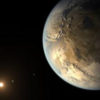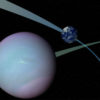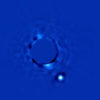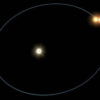An international team of astronomers have announced the discovery of a new rocky planet the same size as Earth that could have liquid water on its surface. The potentially habitable planet, dubbed Kepler-186f, was discovered using data from NASA’s Kepler telescope and verified by the Gemini and Keck telescopes. “What makes this finding particularly compelling […]










